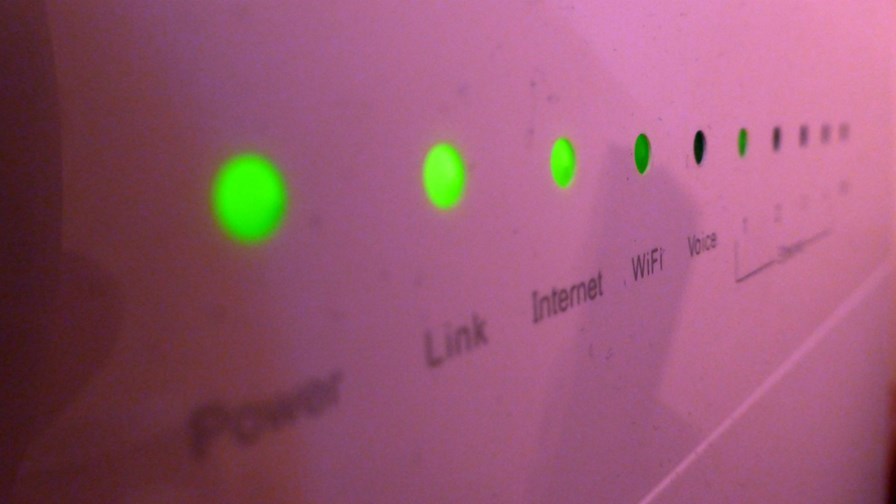Fixed broadband connections in the US continue to grow, but the urban/rural divide widens

via Flickr © Sean MacEntee (CC BY 2.0)
- 84 per cent of US households will have fixed broadband connections by the end of the year
- But switched telecoms subscriptions are in freefall
- Official broadband maps proven to be inaccurate
- Rural homes face a "systematic and growing overstatement of broadband service availability”
A new "State of the Industry 2020" report from 'US Telecom - The Broadband Association' forecasts that by the end of December this year 84 per cent of American households will be subscribers to fixed broadband connections. That equates to about 109 million homes. The report adds that by the same date 79 per cent of voice connections will be over wireless as the number of US homes subscribing to 'traditional' wireline telecoms continues its precipitous decline.
Telecoms connectivity provided by Internet-based OTT players is proving increasingly popular with 29 per cent of American householders now subscribing, primarily through cable operators. Meanwhile old-fashioned switched telephone subscriptions are in freefall having collapsed from 186 million in 2000 to an estimated 24 million by the end of 2020.
The research shows that back in mid-2018, 98.6 per cent of Americans had access to fixed Internet service (at any speed) while 99.8 per cent had access to a mobile network. Simultaneously, satellite-based connectivity was all-but ubiquitous. Furthermore, 91.4 per cent of households had the choice of accessing services via access to two or more fixed ISPs and 92 per cent of homes could access four or more LTE networks.
USTelecom - The Broadband Association also reports two or more fixed broadband networks are available to 91 per cent of households and two or more wired networks are available to 86 per cent of residences. In urban areas, 97 per cent of homes have a choice of two or more fixed broadband networks. Ninety-eight percent of Americans have access to three or more mobile networks.
Back in 2012, 53 of Americans had access to two or more wired broadband networks providing speeds of between one and 10 Mbps/. By June 2018 that has risen to 72 per cent in mid-2018. In 2012 just 23 per cent of homes could choose from two or more wired broadband networks proving connectivity speeds of between three Mbps and 25 Mbps. By mid-June that percentage had risen to 5 9 per cent.
So, choice of suppliers and range of available broadband speeds are very much on the up-and-up for US households overall but it's not all unalloyed good news - especially as far as rural homes are concerned. The connectivity gap between the rural and urban fixed broadband access remains unbridged.
For example, between June 2015 and June 2018 the availability of services in the one Mbps to 10 Mbps and three Mbps and 25 Mbps ranges were 10 per cent lower in rural areas that in the cities. And it has actually got worse. Last year US Telecom estimated that the gap in the three Mbps to 25 Mbps range has actually increased to 33 percentage points. Not good.
Official figures overstate broadband availability and speeds
There is also growing concern about the inaccuracy of official maps of broadband area coverage and availability in the rural US (and in urban areas as well for that matter) with many industry analysts now of the opinion that the digital divide in the US is wider than it appears to be.
For example, broadband maps from the US regulator, the Federal Communications Commission (FCC) can be inaccurate, with figures pertaining to the state of Pennsylvania being a particular case in point. The FCC's broadband maps show that all Pennsylvania households have access to 25 Mbps broadband services. The reality is that they don't.
Last year the Pennsylvania State University conducted a major study called, “Broadband Availability and Access in Rural Pennsylvania,” which drew on evidence garnered from 11 million speed tests showing that median speeds in parts of the simply did not meet the FCC’s broadband criteria. And guess what? Yup, households in rural counties got pitifully slower broadband access speeds than homes in urban areas. Indeed, the only places where media speeds matched with the FFC's criteria were in and immediately around the cities of Philadelphia and Pittsburgh.
Furthermore, examination of the millions of speed tests conducted in Pennsylvania since 2014 showed the broadband divide had actually increased over the past five years with differences between the FCC's map speeds and speed-tests speeds growing annually. The report concluded that the figures indicate "a systematic and growing overstatement of broadband service availability in rural communities.”
Email Newsletters
Sign up to receive TelecomTV's top news and videos, plus exclusive subscriber-only content direct to your inbox.




